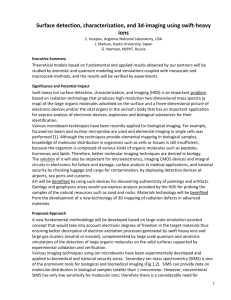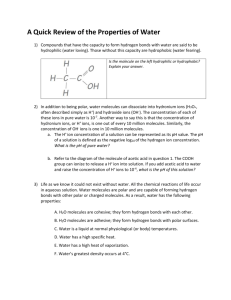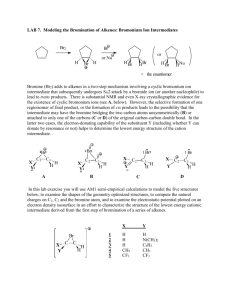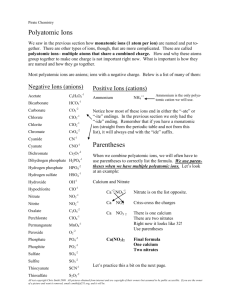The Concentration of Ions in Solution
advertisement
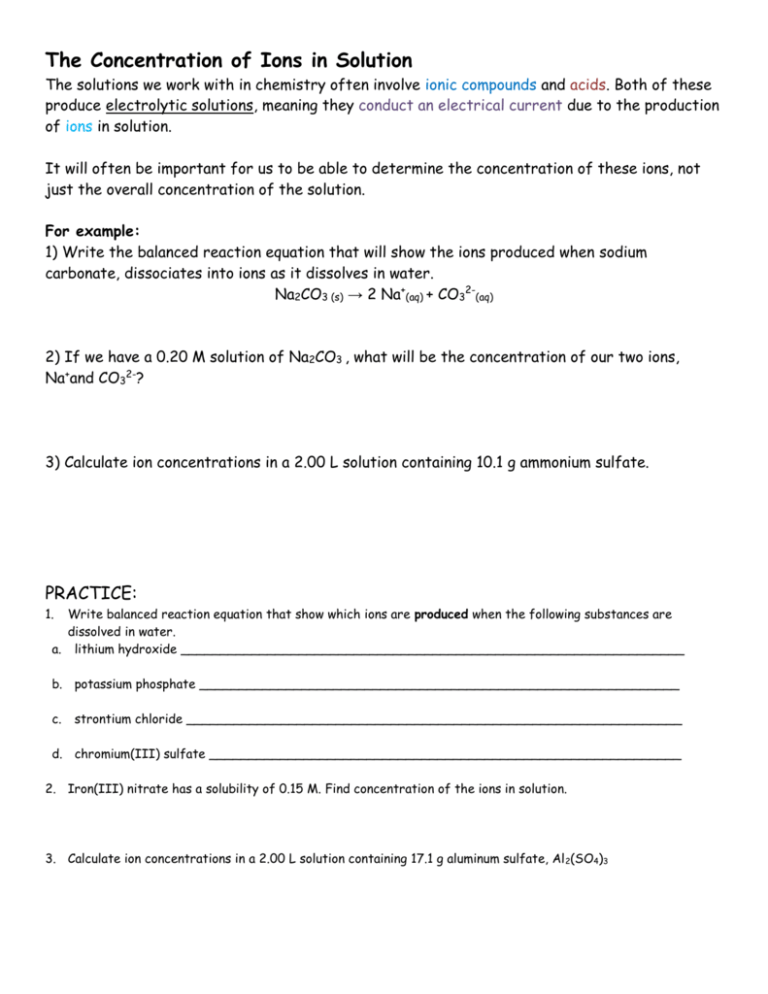
The Concentration of Ions in Solution The solutions we work with in chemistry often involve ionic compounds and acids. Both of these produce electrolytic solutions, meaning they conduct an electrical current due to the production of ions in solution. It will often be important for us to be able to determine the concentration of these ions, not just the overall concentration of the solution. For example: 1) Write the balanced reaction equation that will show the ions produced when sodium carbonate, dissociates into ions as it dissolves in water. Na2CO3 (s) → 2 Na+(aq) + CO32-(aq) 2) If we have a 0.20 M solution of Na2CO3 , what will be the concentration of our two ions, Na+and CO32-? 3) Calculate ion concentrations in a 2.00 L solution containing 10.1 g ammonium sulfate. PRACTICE: 1. Write balanced reaction equation that show which ions are produced when the following substances are dissolved in water. a. lithium hydroxide ________________________________________________________________ b. potassium phosphate _____________________________________________________________ c. strontium chloride _______________________________________________________________ d. chromium(III) sulfate ____________________________________________________________ 2. Iron(III) nitrate has a solubility of 0.15 M. Find concentration of the ions in solution. 3. Calculate ion concentrations in a 2.00 L solution containing 17.1 g aluminum sulfate, Al 2(SO4)3 SOLVATION OF SODIUM CHLORIDE cations are positively charged (also known as HYDRATION) anions are negatively charged Closer view: Description of the Solvation (or Hydration) Process: H2O is a polar molecule. These charged regions are attracted to ions with the opposite charge. Hence, the positively charged regions of water molecules are attracted to Cl- ions, and the negatively charged regions of water molecules are attracted to Na+ ions. When several water molecules surround an ion in the crystal, the sum of the attractive forces between the water molecules and the ion may become strong enough to overcome the attractive forces between the cations and anions in the crystal. The water molecules form a shell of solvation around the ion, and the water-surrounded ion can break away from the crystal




